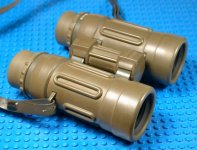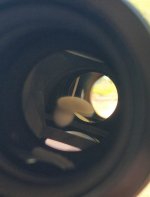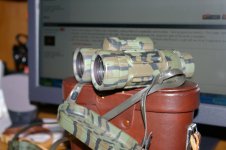MandoBear
Well-known member
This weekend I was going through some boxes I've had in storage and found a BBC Wildlife Magazine from March 1989 -in which there was a test of binoculars of various makes and types from the era - including Zeiss, Leica, Nikon, Opticron, Alderblick, Optolyth, Swift, Carl Zeiss Jena, and Bresser. The test included a water resistance test whch comprised of "placing the binoculars under a lawn sprinkler for five minutes; after vigorous focusing, they were then placed in the fridge for two hours to test for internal condensation. Numbers one and two in their overall rankings were Zeiss Dialyt 10x40B, followed by Nikon 8x30. Both proved completely water resistant."
I thought this was very interesting and quite surprising (not so much for the Zeiss Dialyt because this is a roof-prism, though not of modern, sealed construction), but for the Nikon 8x30 - which in that era would have been the Nikon E-series, and, one would have thought, rather less water resistant with its traditional Zeiss-type porro-prism body. Makes one wonder if the modern Nikon EII would be similarly resistant to the sprinkler and fridge test?
I thought this was very interesting and quite surprising (not so much for the Zeiss Dialyt because this is a roof-prism, though not of modern, sealed construction), but for the Nikon 8x30 - which in that era would have been the Nikon E-series, and, one would have thought, rather less water resistant with its traditional Zeiss-type porro-prism body. Makes one wonder if the modern Nikon EII would be similarly resistant to the sprinkler and fridge test?







